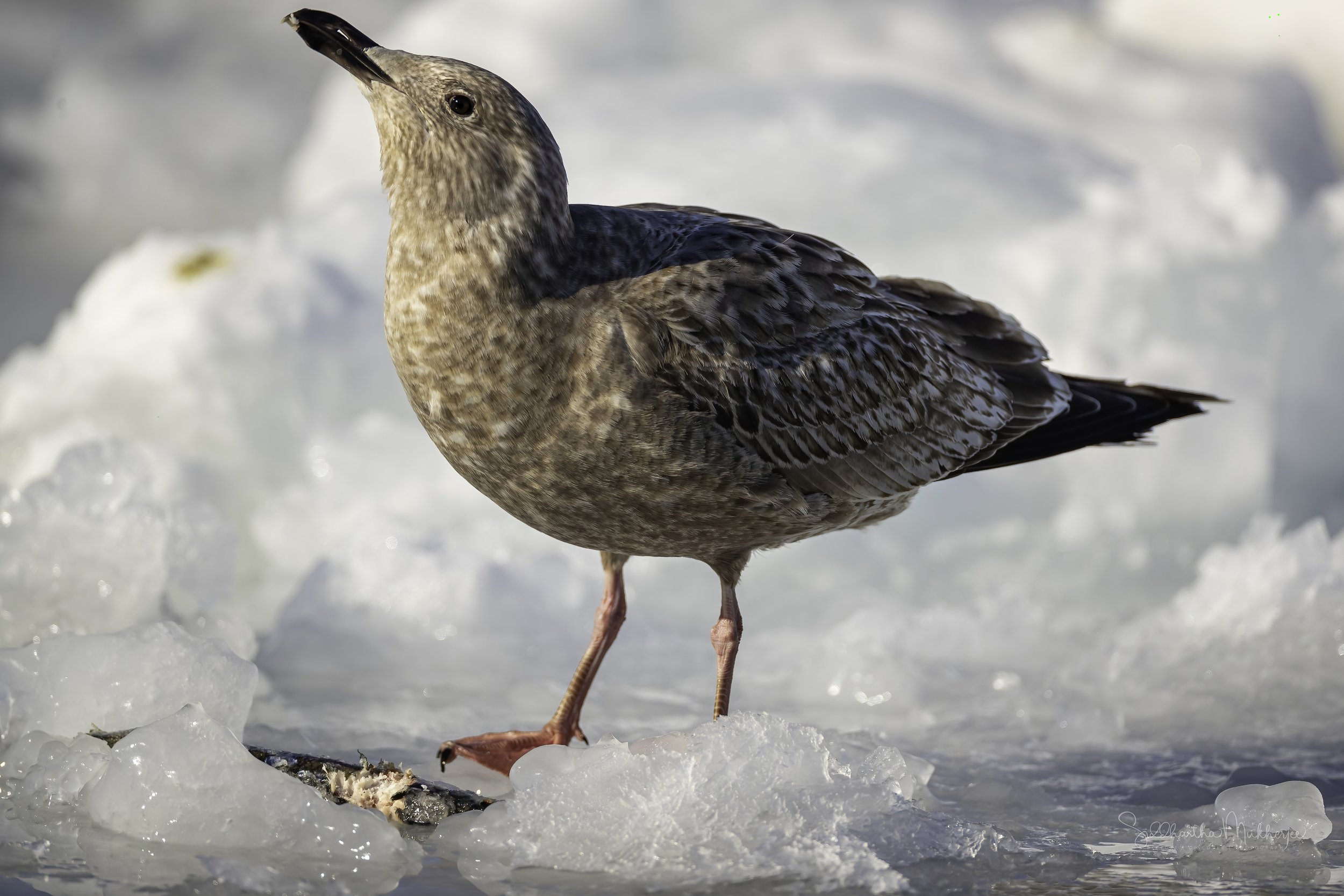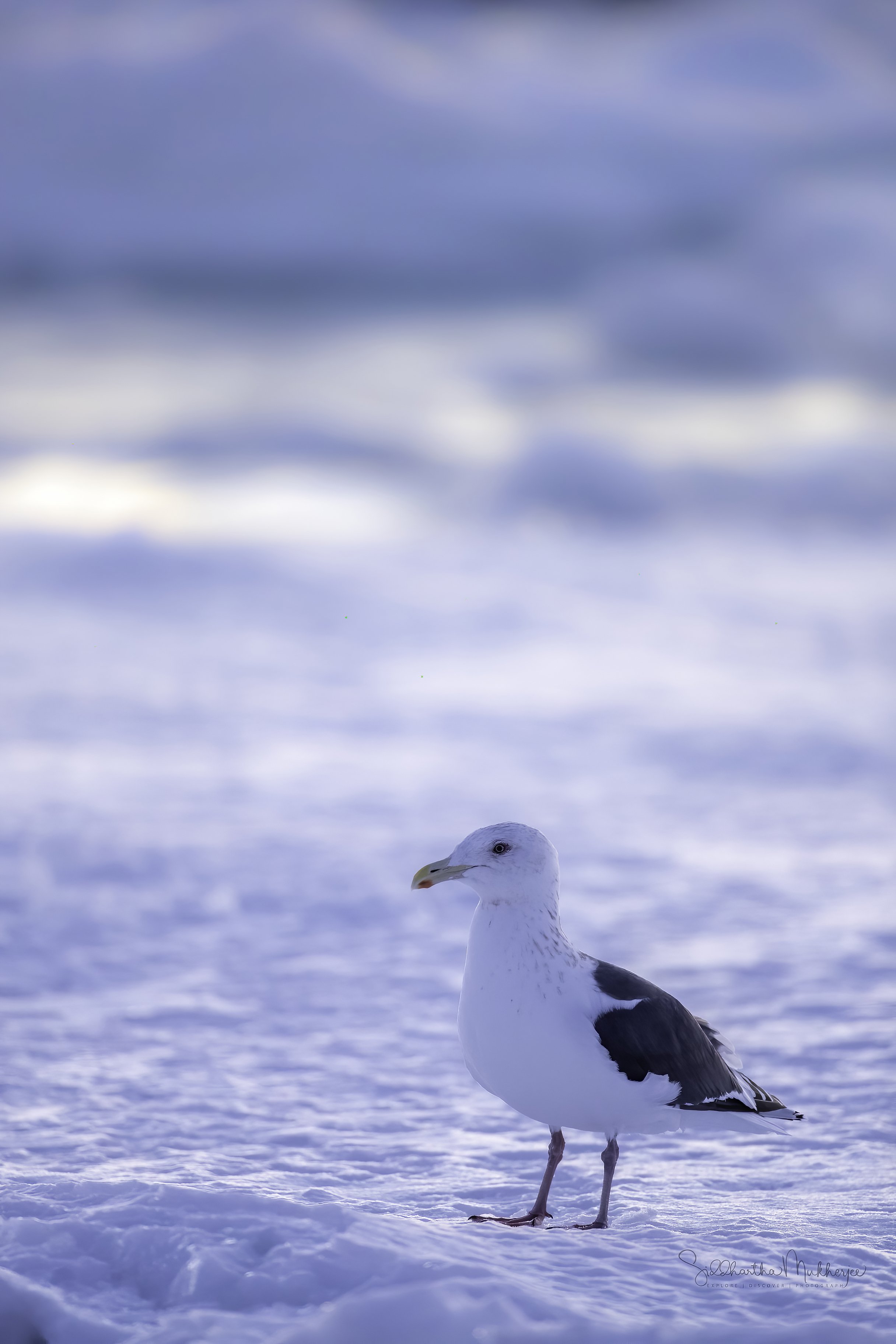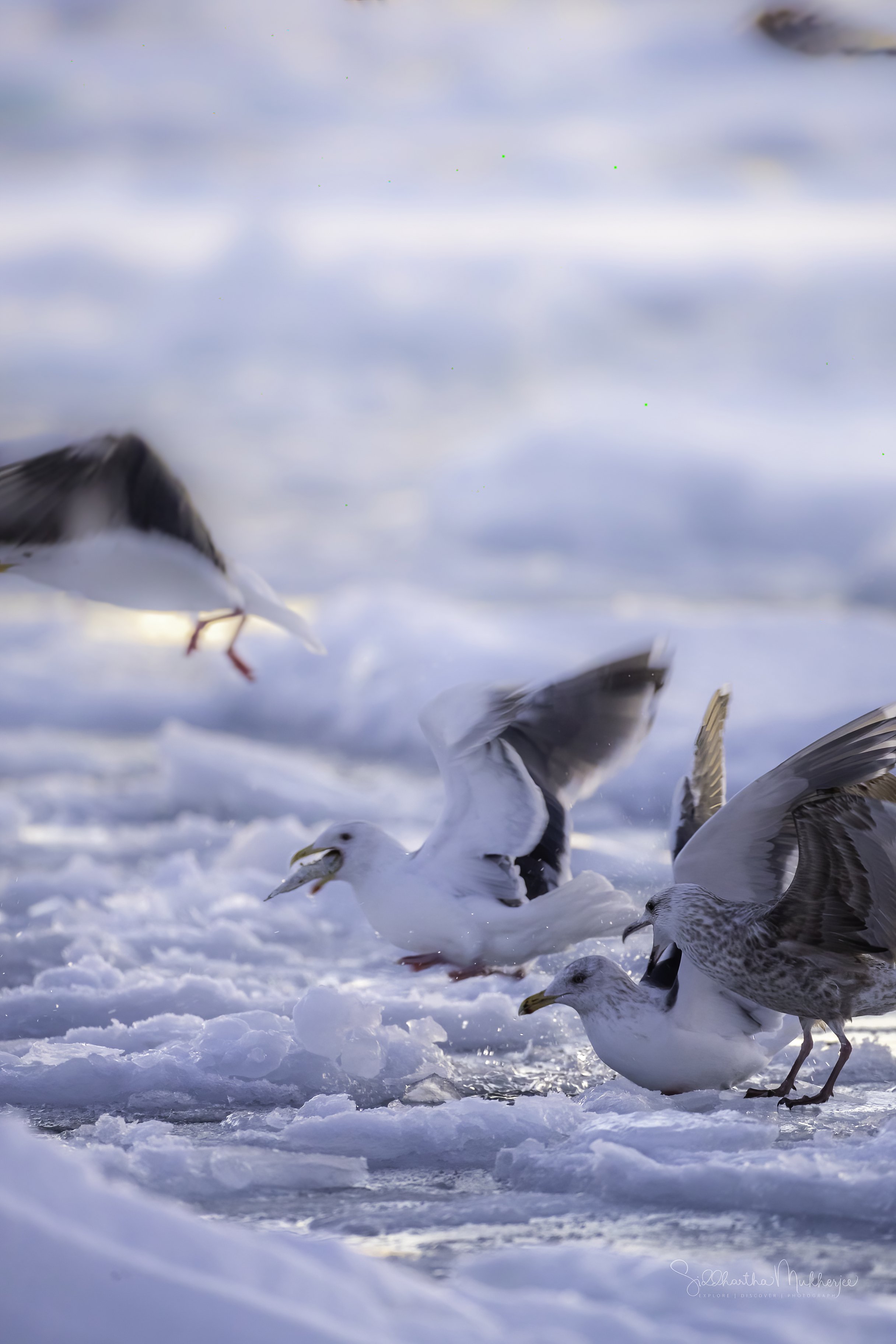Slaty-backed Gull
Larus schistisagus
Hokkaido, Japan
Japan, the land of the rising sun, is home to some spectacular habitats hosting incredible species of wildlife. I had the opportunity to visit the island of Hokkaidō and spend some time in its wilderness photographing the spectacular wildlife that inhabit this island. Hokkaido is Japan’s second largest island and although there were Japanese settlers who had ruled the southern tip of the island since the 16th century, Hokkaido was considered foreign territory that was inhabited by the indigenous people of the island, known as the Ainu people. Located in the north of Japan near Russia (Sakhalin Oblast) Hokkaido has coastlines on the Sea of Japan (to the west), the Sea of Okhotsk (to the north), and the Pacific Ocean (to the east). The center of the island is mountainous, with volcanic plateaux. Hokkaidō has multiple plains such as the Ishikari Plain 3,800 km², Tokachi Plain 3,600 km², the Kushiro Plain 2,510 km² (the largest wetland in Japan) and Sarobetsu Plain 200 km².
The Tsugaru Strait separates Hokkaidō from Honshu (Aomori Prefecture) while the La Pérouse Strait separates Hokkaidō from the island of Sakhalin in Russia and the Nemuro Strait separates Hokkaidō from Kunashir Island in the Russian Kuril Islands. We made our way out on the Nemuro Strait early one winter morning in sub zero temperatures to find the spectacular birds that frequent the drift ice in this strait - the Stellar’s Sea Eagle, the White-tailed Eagle and numerous seagulls one of which is the Slaty-backed Gull.
The Nemuro Strait
In the Ainu language, Rausu - the east coast of the Shiretoko Peninsula - also means the East. In winter, when the sun rises, a rosy dawn shines on the drift ice makes Rausu a must-see, with or without wild animals. On beautiful clear days, one can also enjoy the view of the Kunashir Island, which means dark island in the Ainu language, because it is usually hidden behind clouds and mist. In Rausu, the presence of the drift ice keeps the sea relatively peaceful and sailing these waters on clear days a stunning reflection of the sky and the surrounding mountains from the Shiretoko Peninsula can be seen. Sailing the waters of the Nemuro Strait with a beautiful sunrise and the mountains on the horizon is an experience I am not likely to forget in my lifetime!
The Nemuro Strait, also called the Notsuke Strait and Kunashirsky Strait, is a strait, located at 44°N 145.3°E, separating Kunashir Island of the Kuril Islands, Russia (claimed by Japan) from the Shiretoko Peninsula, Hokkaidō, Japan. The strait connects the Sea of Okhotsk in the north to the Izmeny Strait in the south. It is located on the southeastern borders of Sakhalin Oblast, Russia, and Nemuro Subprefecture of Japan. Along the strait runs the border between the two states. The Strait of Nemuro is approximately 24 kilometres wide and 74 kilometres long. The maximum depth is 2,500 metres (8,200 ft). The Japanese towns of Rausu and Shibetsu overlook the strait.
The history of this land is interwoven with the abundant natural resource; salmon. As such it has come to be known as "the mecca of salmon". These salmon of the Nemuro Strait have enthralled people throughout the ages. Human life, which has continued for over 10,000 years; the repeated clashes and exchanges of different cultures; the history of this land is interwoven with the abundant natural resource known as salmon. In the Edo period, salmon from the Nemuro Strait were offered to the Shogunate as a brand. In the last days of the Tokugawa Shogunate, an Aizu clansman focused his attention on this resource and began to sow the seeds of the fishing industry. And now, those seeds have grown into the key industry that connects the dinner tables of the whole of Japan. The coast of the Nemuro Strait is the most northeasterly part of Japan. This is a feature of the history and culture of the people who laughed and cried with the salmon, and the pride-filled “mecca of salmon”.
The Notsuke Peninsula is the biggest sandbank jutting out into Nemuro Strait on the eastern coast of Hokkaido. Its unique shape resembling a fishhook was formed from repeated sand and pebble moraine and seawater erosion by the fast oceanic current in the Nemuro Strait over many years. Seawater erosion also causes the Sakhalin fir and Mongolian oak to wither while still standing, transforming it into a magical and desolate scene of Todowara and Narawara, and emphasising the atmosphere of the end of the eastern land. The Kunashiri Island and the following Kuril Islands lie across the waters, only 16 kilometres away. The Notsuke Peninsula is the closest coast to the main island of Kunashiri which served as a hub between the main island of Hokkaido and the islands across the Nemuro Strait. According to the ruins and materials surviving today, the constant movement of people and goods can be traced, and the sharing of culture from the Jomon period to Edo period. From Kunashiri Island, further east, lies Etorohu Island in the Kuril Island chain and further along is the Kamchatka Peninsula, backed up by the Russian mainland.
Notsuke Peninsula was an open gate to the east, the entrance to a vast world that can't be imagined from its current wild landscape, and tells that it is a place which has been exposed to drastic changes in history. Also, salmon being the largest product of the Nemuro Strait coastal area has changed roles with the times and played a part in its history. There are ruins from the Edo period at the end of the 18th century at the tip of Notsuke Peninsula. These are ruins of Notsuke Tsukoya (the place that people take a rest and stay or change their horses while Hokkaido was developing) established by the Edo Shogunate as a relay point to Kunashiri Island in 1799. There are accommodations and warehouses for people travelling across the Island and who would change ships on voyages here because the water is shallow on the north side coming from Notsuke Peninsula. It is said that there was an entertainment district called Kiraku at the tip of Notsuke Peninsula but according to recent investigations in recent years, it is now thought to have been ruins of a transit point and surrounding simple lodging houses for herring fishermen. Beyond the Notsuke Peninsula from Kunashiri Island and Etorofu Island to the Kuril Islands is thought to have been an important trading route for the Ainu people long ago. The Nemuro Strait area including current areas such as Rausu, Shibetsu, Betsukai and Nemuro (all facing Kunashiri Island) was called “Menashi” which means the East Side. Menashi Ainu were trading with Kuril Ainu, exporting lacquerware, silk, cotton and iron pots that were had via the Matsumae Domain (an Edo period Japanese domain in southern Hokkaido), importing sea otter leather, eagle fur and other goods of the Kuril Islands and Kamchatka Peninsula.
Trade goods such as sea otter leather and eagle fur were prized among Wajin (ethnic Japanese), it was important for the Matsumae Domain because the economy of Matsumae was supported by goods coming from Ezo (modern day Hokkaido). We can see a description that one of the trade goods was dry salmon. Matsumae Domain, who had the sole right to trade with the Ainu, had acquired the products of Russia and Northern Kuril through trade. Afterwards, they established a trading post on Kunashiri Island. After that, they started to leave trade to merchants, Hidaya Kyubei who took Menashi area produced salted fish to use a large amount of salmon that swam upstream on the Nishibetsu River in Betsukai town. We know that Salmon was among the principal trade goods as a product of Ezo.
I have included some of the stunning landscapes from the drift ice and also from the Notsuke Peninsula. Read about the wildlife frequenting the Notsuke Peninsula below.
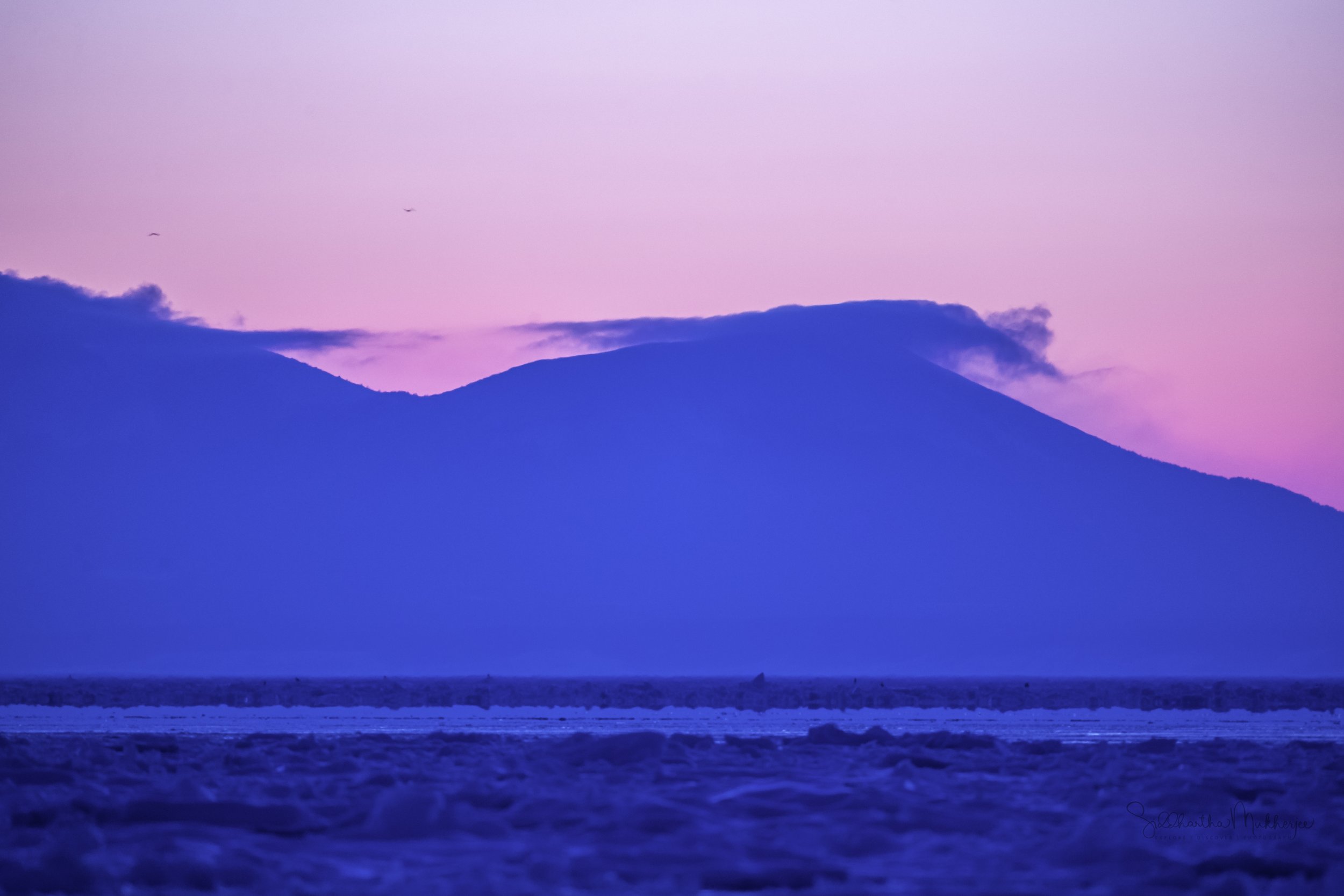
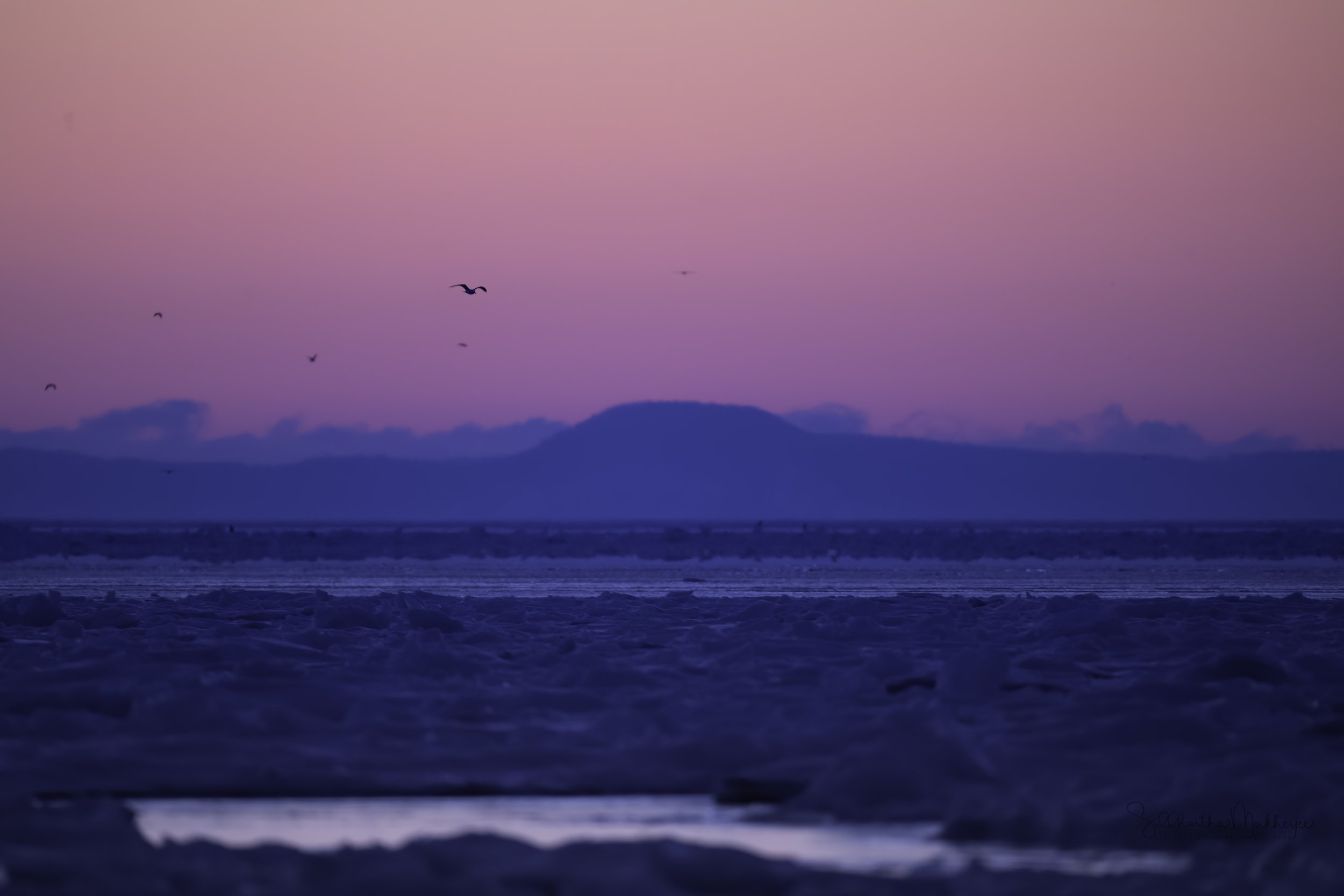
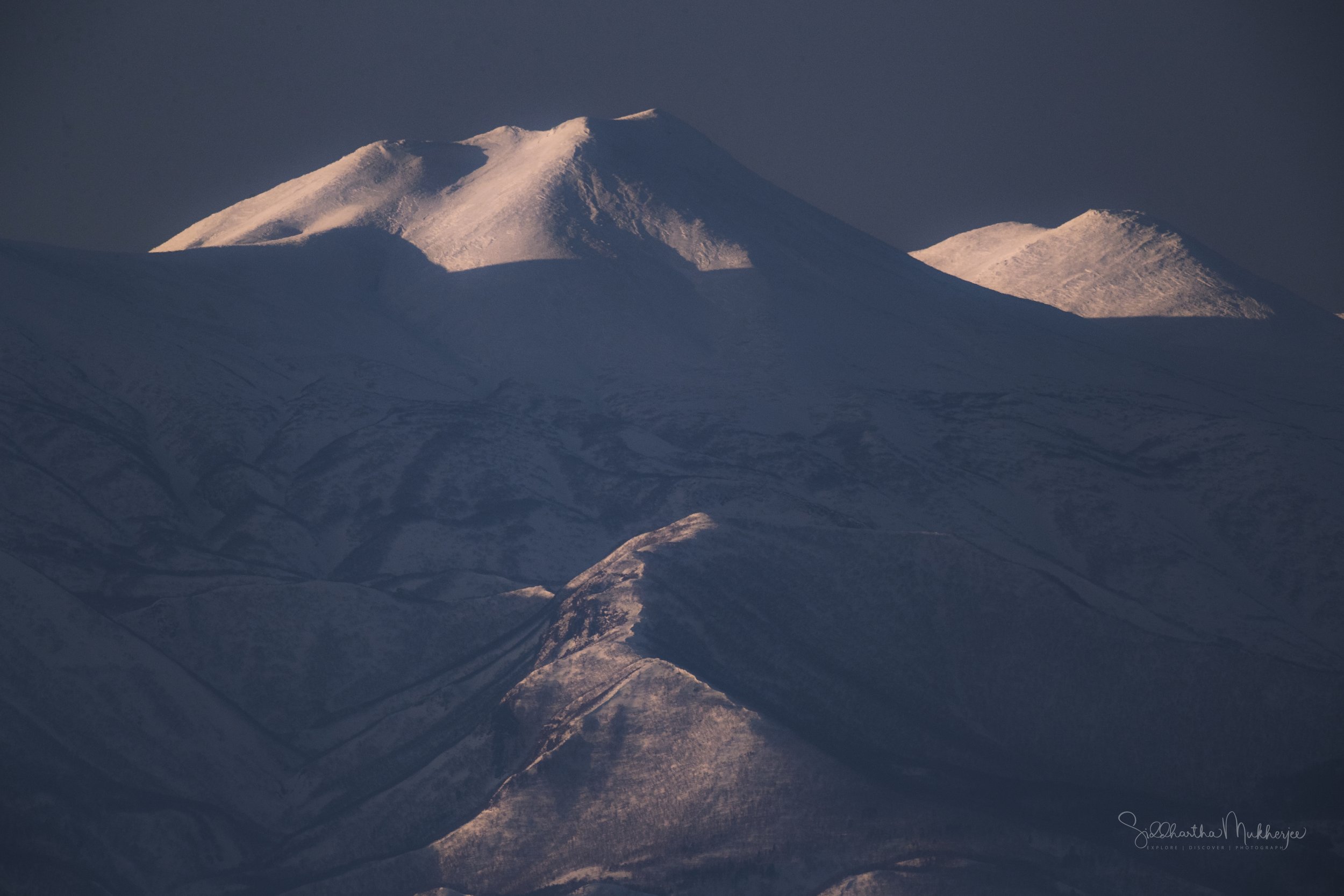
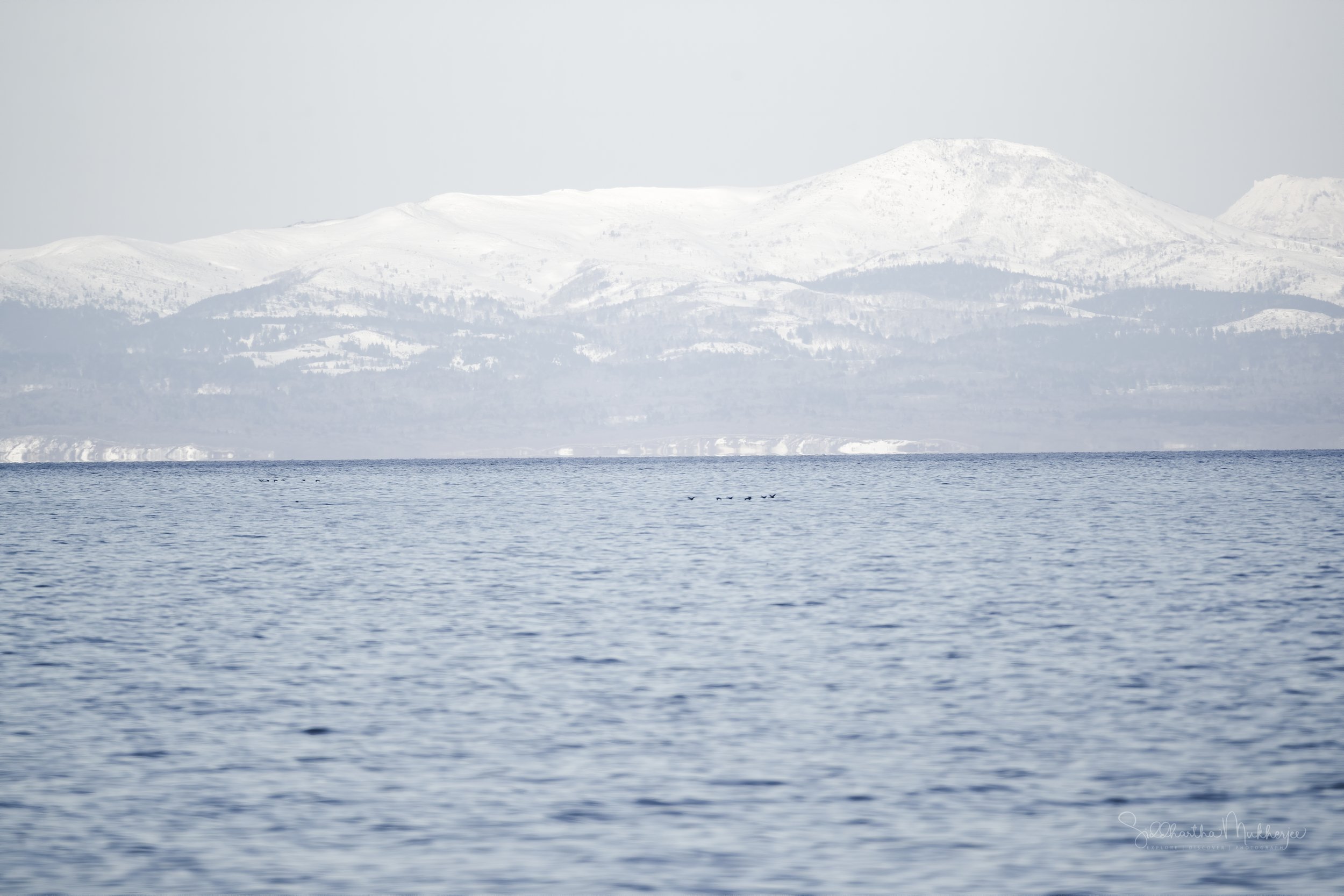
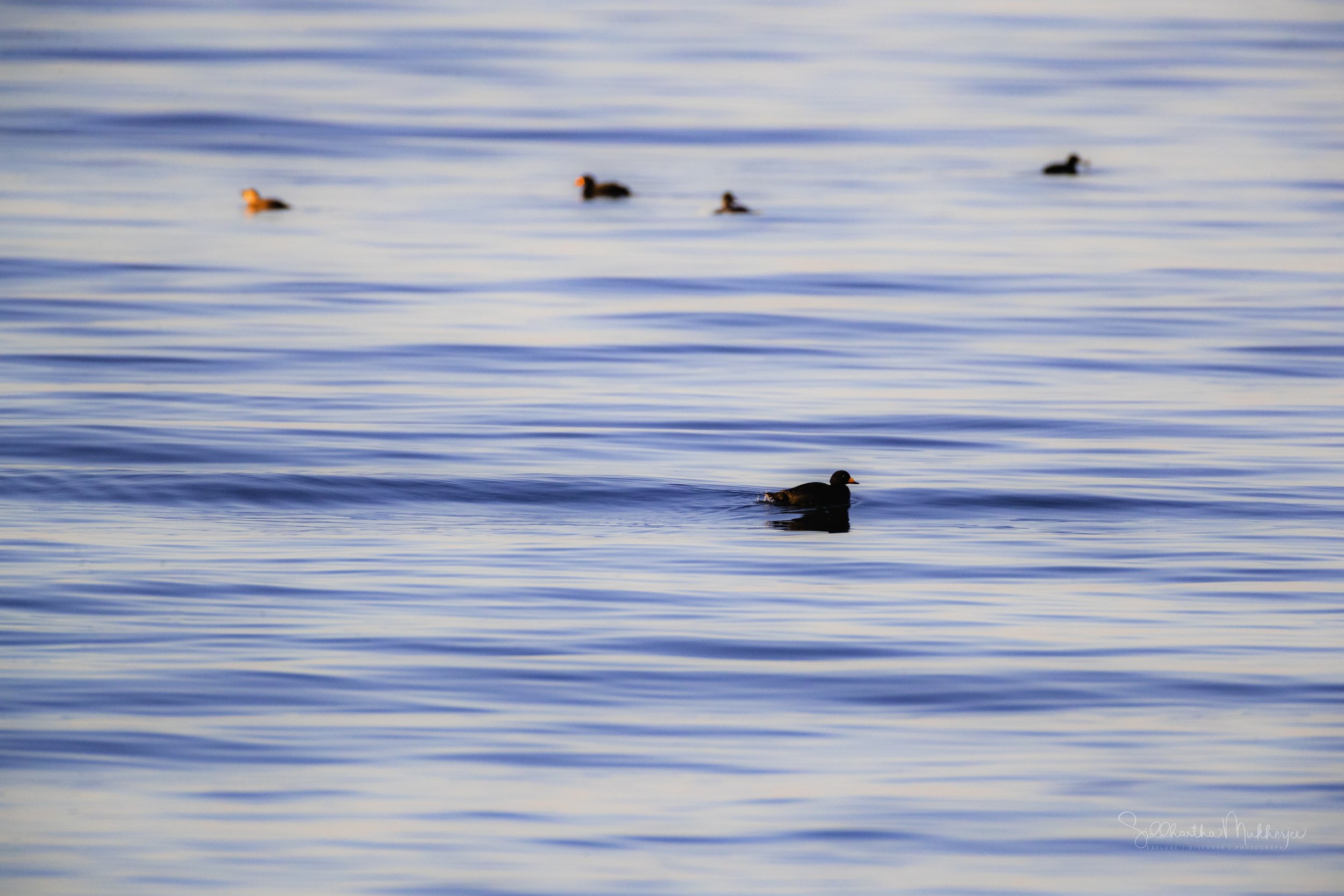
Read about my other wildlife from Hokkaido:
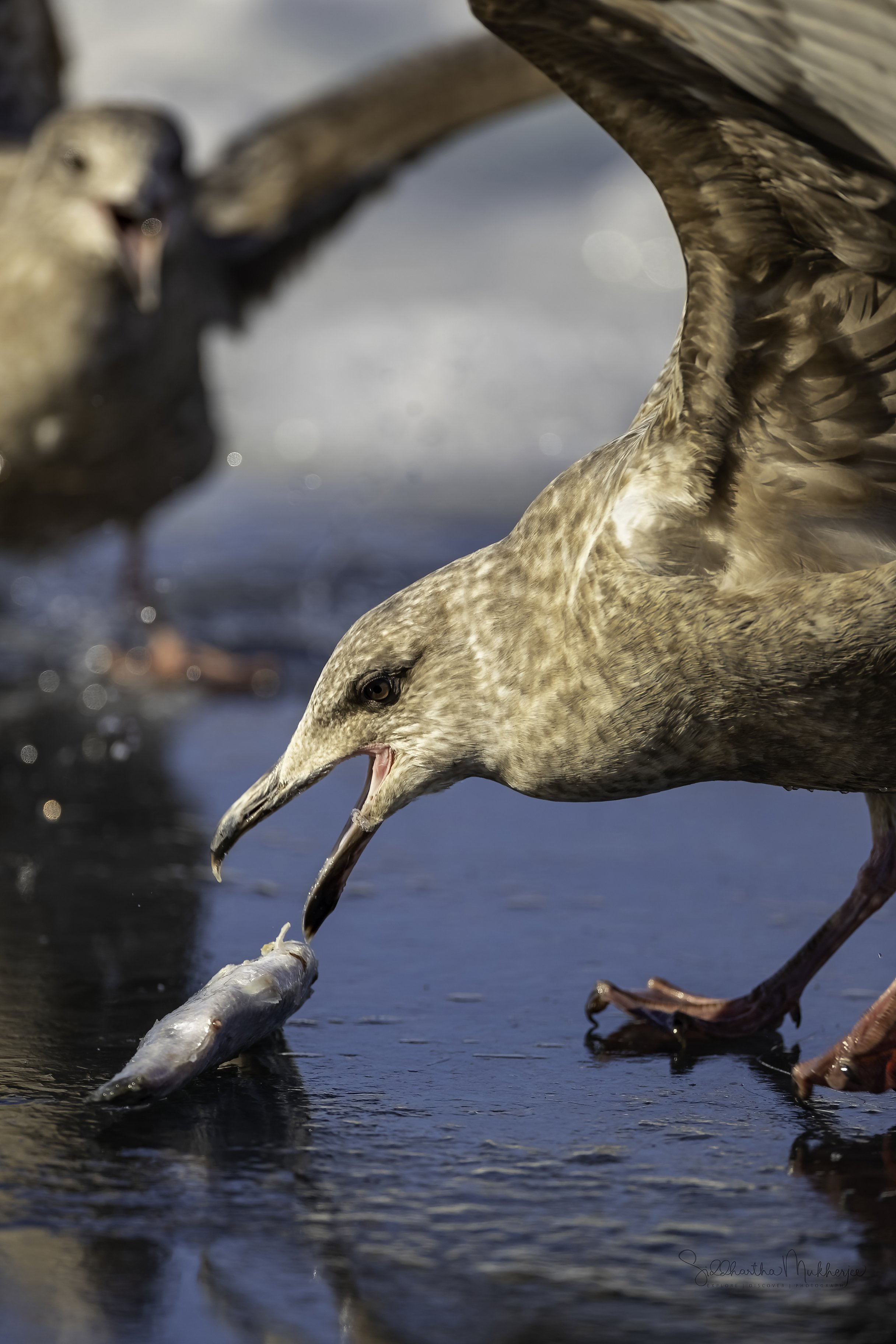
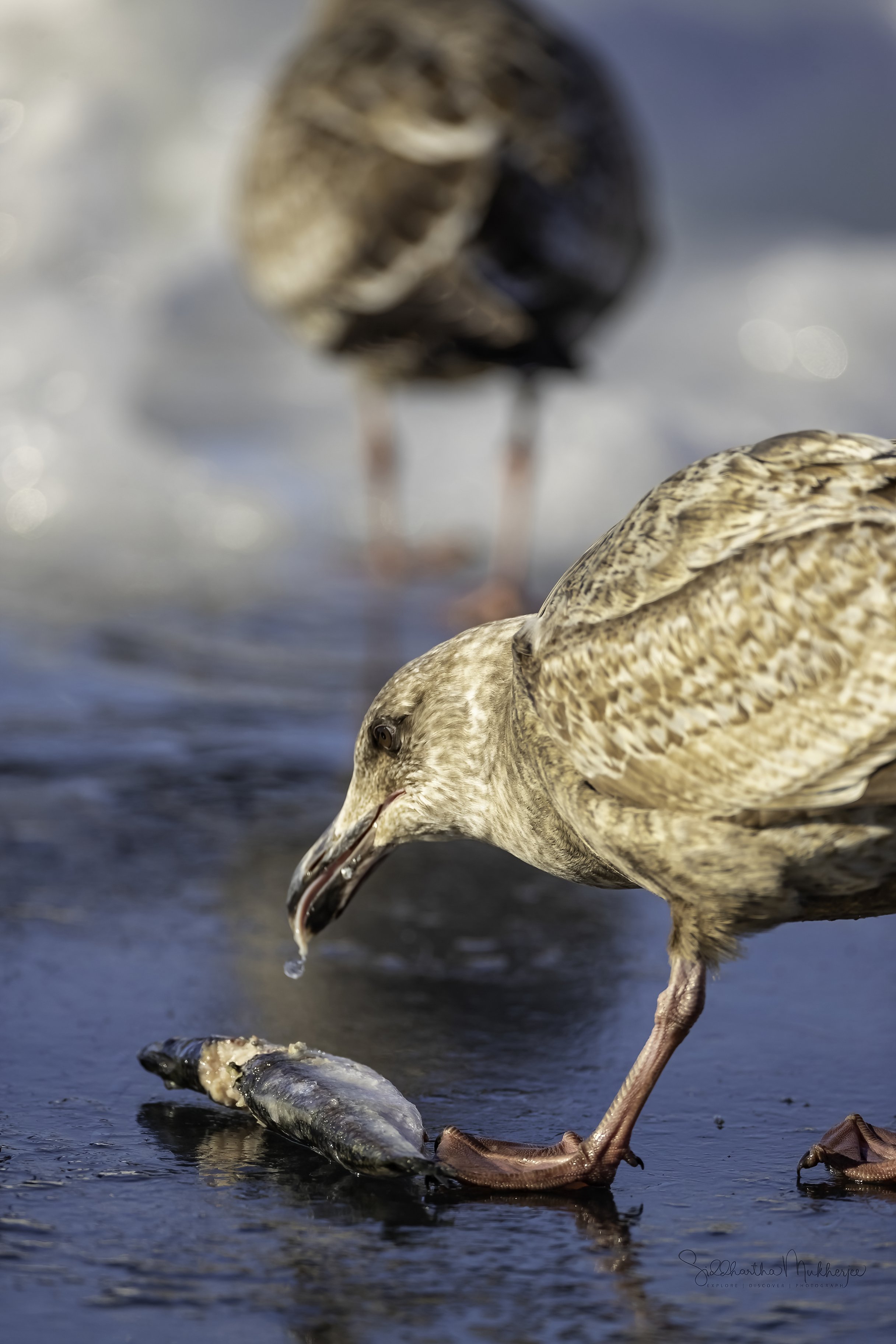
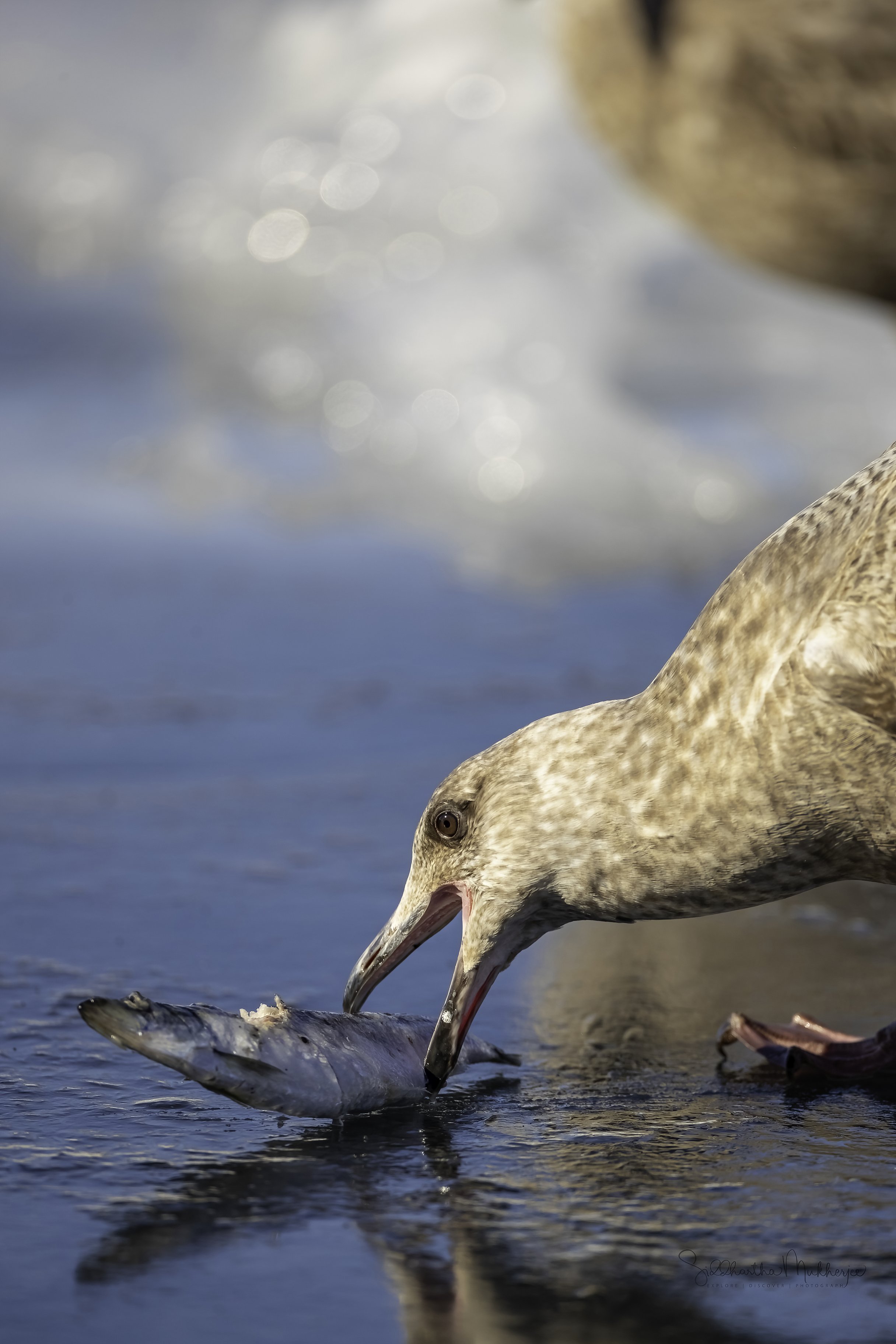
View my Hokkaido Playlist here:
Slaty-backed Gull
The Slaty-backed Gull (Larus schistisagus) is a large, white-headed gull that breeds on the north-eastern coast of the Palearctic, but travels widely during non-breeding seasons. It is similar in appearance to the Western Gull and the Glaucous-winged Gull. Another alternate name is Pacific Gull, though it also applies to a Southern Hemisphere species, Larus pacificus. The genus name is from Latin larus, which appears to have referred to a gull or other large seabird. The specific schistisagus is from Neo-Latin schistus, "slate", and Latin sagus, "cloak"
The Slaty-backed Gull is native to the Pacific coast of northeastern Asia. Individuals have strayed to various places throughout North America, including New England and Texas. The species has only been spotted three times before in Europe.
It is tied with the Yellow-footed Gull for fourth-largest gull species, measuring between 55–68.5 cm in length with a wingspan between 132–160 cm, and weighing between 1.05–1.7 kg. Among standard measurements, the wing chord is 40 to 48 cm, the bill is 4.8 to 6.5 cm, and the tarsus is 6 to 7.6 cm. It has a white head, belly, and tail with a dark slaty-gray back and wings with a broad white trailing edge. The wings and back are slightly darker than those of the western gull (Kodak grey scale 9.5 to 12 compared to Kodak 9 to 11 of the darker southern subspecies of Western Gull). On the outer primaries (p9 and p10), there are white spots called mirrors. The inner webs to primaries are pale grey, and the mid-primaries have long grey tongues tipped with large white crescents, forming a "string of pearls" pattern connecting to the broad white trailing edge of the secondaries. Its eyes are yellow surrounded by purple to deep pink orbital skin. The legs are pink and short when compared with those of similar-looking gulls, and the body appears more stout with a "pot-bellied" appearance. The bill is yellow with orange-red subterminal spot (the spot near the end of the bill that chicks peck to stimulate regurgitative feeding). Immature gulls' plumage is brown, similar to that of the great black-backed gull, but paler, and is practically indistinguishable from the immature herring gull in the field.
In all ages, outer wing pattern offers best clues; wing-tip appears streaked with pale line of dots, as primaries (apart from P9-P10) have pale inner webs and mid-primaries broad white tongues, a pattern only matched to such a clear degree by certain hybrid gulls (Glaucous-winged x Western Gull, Glaucous-winged x American Herring Gull). Western Gull of the paler-mantled occidentalis shows heavier bill with more bulbous tip and squarer head, with eyes sitting higher on head. American Herring and Vega are slightly smaller and less heavy with slimmer bill and generally longer wings. Adult upperparts are much paler than in Slaty-backed and wing-tip darker.
In flight the adult wing pattern is striking. Caused by grey inner webs to primaries, the underside of the wing-tip looks mainly grey with black limited to tips, and the conspicuous white ‘string of pearls’ dulled somewhat by pale surroundings.
In summer, bill similar to Vega and American Herring, but generally paler orange-yellow. In winter, bill duller: base of bill often pinkish from Aug, and frequently bill shows narrow dark subterminal markings. Head and breast-sides heavily brown-spotted or -streaked, often with dense streaks around eye forming elongated dark mask, narrowing in front of pale eye. Legs pink, often raspberry-pink to rosy.
The rather dark upperparts make confusion with Western Gull highly probable. Western of similar size, but head heavier, bill with more bulbous tip, eyes are smaller and darker, and placed further back and higher on head, and wing-tip is more solid black with white mirror on P10 only and black wedges to all primaries; at most shows ‘string of pearls’ in mid-primaries and – from below - much fuller black hand than Slaty-backed. Furthermore, upperparts are less bluish-tinged, legs duller flesh and head mainly white in winter. Vega and American Herring Gull generally smaller with paler grey upperparts (darkest in Vega) and more solid black wing-tip, typically lacking pale streaks and line of spots: the character is not foolproof, as some Vega and American Herring show limited black on wing-tip, and some Slaty-backed lack white subterminal spot on P8. Hybrid Western x Glaucous-winged Gull with outer wing similar to Slaty-backed identified in winter by weaker, greyer, dark head-markings, more diffuse rather than spotted or streaked, squarer head with eyes places higher on head, and bulbous tip to heavier bill.
The Juveniles are dark to greyish-brown with washed-out brown patterning and pale-scaled saddle; rear scapulars often with paler subterminal areas. In some, pale hindneck contrasts with darker ear-coverts and crown. Under-body brown, appearing velvety, but lower belly often pale, isolated from darker breast-bar, flanks and rather uniform dark underwing-coverts. Undertail-coverts with scattered dark markings only. Wing-tip brown with pale inner webs and edges as in first-year Thayer’s, but P9-P10 often uniform; mid-primaries with dark spots near tip, forming dark trailing edge to outer wing - from below striking in head-view. The primary pattern mirrors the ‘string of pearls’ of adults, but pale tongues on P6-P10 prominent. In flight, the hand often appears mid-brown with darker edges, and thus pale ‘window’ on inner wing of Vega and American Herring appears non-existent or at least very weak. Secondaries create dark trailing edge to inner wing and show white tips. Coverts brown, lesser coverts with pale edges, greater coverts with indistinct pale diluted markings and broader whitish tips. Outer greater coverts may be paler or darker than inner ones, but lack any strong barring.
The Tertials are brown with rather straight and often narrow pale edges; notching and irregular pattern reduces to tips, typically slightly paler than wing-tip but darker than mantle. Tail black to dark brown, together with dark-barred or -spotted rump creating dark ‘rear’ typical for W American gulls, but unlike Vega Gull. Tail sometimes with fine white mottling at base and along edges, just visible at close range. The bill is black and the legs pink.
‡‡‡‡‡
Related Posts




